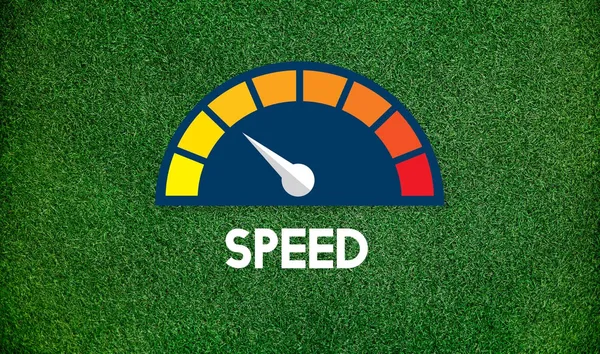The Speed Index (SI) is a measure that shows how quickly the content of a web page is visible to the user. It determines how quickly a page becomes visually interactive, which is crucial for ensuring a good first impression for the user.
This is important because it significantly improves the ease of reception for users, leading to increased engagement, a lower bounce rate, and, most importantly, a better conversion rate.
The SI is important because users expect fast page loading. Research shows that pages that load within 2 seconds have significantly higher conversion rates compared to those that load slower. Additionally, Google considers page load speed as one of the ranking factors, which means that faster pages rank better in search results.
How to Measure Speed Index
To measure the Speed Index of a website, you can use performance testing tools that automatically calculate this parameter. The Speed Index is expressed in milliseconds (ms) and shows how quickly the content of a page is visible to the user. The lower the Speed Index value, the faster the page content becomes visible.
How Does It Work?
Tools measuring the Speed Index analyze a video showing the page loading, calculating the average time for the appearance of individual page elements. This is done by observing the gradual appearance of content on the page and calculating the speed at which the content becomes visible to the user.
What Tools to Use to Measure Speed Index?
There are many tools for measuring the Speed Index, including the popular Lighthouse (integrated with Google Chrome), PageSpeed Insights, and WebPageTest. Each of them provides detailed reports that help identify page elements to improve for optimization of the value.
Speed Index vs. Page Load Time: Understanding the Differences
The Speed Index shows how quickly content appears on the page, such as text and images. Page load time takes into account not only content but also all additional scripts and other files. A page can quickly display content, even if its full loading takes longer. Improving elements visible at the start of the page can increase the Speed Index, even if the total loading time does not change.
How Does the Speed Index Fit into the Overall Performance of a Website?
The Speed Index is one of the 5 most important page performance indicators. It indicates how quickly the user starts to see content, which affects the first impression of the site. Pages with a better Speed Index often have a lower bounce rate and better engagement indicators.
What Speed Index Score is Considered Good?
A good Speed Index score is one that is better than the scores achieved by 80% of existing websites. To be specific, a good score is one that is 3.4 seconds or less. Achieving a score at this level means that the content on your page loads faster than on most other pages, which translates into better user experience and potentially higher conversion rates.
Why Speed Index Important for Your Page?
Speed Index is important because the speed of page loading directly affects user satisfaction and their willingness to interact with the page. Quick content loading improves the first impression and increases the chances of the user staying on the page longer. Therefore, achieving a good SI score is important for increasing the effectiveness of your online marketing.
Speed Index Optimization - How to Improve Page Load Speed?
To improve the Speed Index of a website, which directly affects the user experience and conversion rates, it is important to apply effective optimization strategies. These methods focus on reducing page load time by optimizing resources and code.
Reduction of Render-Blocking Resources
Resources, such as JavaScript and CSS, can delay the appearance of content on the page, blocking its rendering. To limit their negative impact, you should minimize, combine, and asynchronously load these resources. A good practice is to move the so-called "critical" CSS directly to the HTML header section, which allows for faster display of the visual content of the page, even before the entire style file is loaded.
Minimizing Main Thread Work
The main thread work of the browser, which includes rendering, executing JavaScript scripts, and processing CSS, is important for loading speed. By optimizing the code, through reducing unnecessary JavaScript, splitting the code into chunks, and using Web Workers to perform complex operations in the background, you can significantly reduce the load on the main thread. As a result, the page loads faster and becomes interactive for the user earlier.
Reducing the Impact of Third-Party Code
Code from third parties, including analytical tools, live chats, or social media widgets, often slows down page loading. Regular reviews and limiting the use of these resources to only the most necessary ones can significantly improve the Speed Index. It's worth considering whether each of the add-ons is necessary for the functionality of the page, and testing alternative methods of implementing these tools that will have less impact on performance.
Ensure Text Remains Visible During Webfont Load
Web fonts can beautify a page, but they can also delay the display of text. To prevent this, use the font-display: swap; attribute in CSS, which allows for immediate display of text in the browser's default font, while web fonts are being loaded. This way, users can read the content without waiting for the entire font to load, which improves the user experience and may contribute to a better Speed Index.
This solution can cause increased Layout Shift, so it is not without flaws. You need to evaluate what is more important for our site at a given moment.
Speed Index and Google Page Ranking
Page load speed has a direct impact on its positioning in Google search. Pages that load faster often rank higher in search results.
Page Load Speed and SEO
Page load speed is an important SEO factor because it affects user satisfaction. Google considers speed a key element of a user-friendly web service. Pages that load in less than 3 seconds are more likely to achieve a better ranking in the search engine. Therefore, optimizing the Speed Index can directly contribute to increasing the visibility of your site in search results.
Choosing a Modern Protocol (HTTP2/HTTP3)
Using modern internet protocols, such as HTTP2 and HTTP3, can significantly speed up page loading. These protocols offer improvements such as multiplexing (multiple queries in one connection), which reduces latency. Switching to HTTP2 or HTTP3 is often a simple change in server configuration, which can have a big impact on page load speed and its positioning.
Summary
The Speed Index (SI) is a very important indicator of the speed at which a website's content loads, directly affecting the user experience, SEO, and conversions. Achieving a score better than 80% of pages, i.e. below 3.4 seconds, is desirable for optimization. Effective improvement of the SI requires focusing on resource optimization, reducing render-blocking resources, and choosing modern network protocols.
Frequently Asked Questions
What is the Speed Index?
The Speed Index is a measure that shows how quickly the content of a page becomes visible to the user. It is expressed in milliseconds, and the lower the value, the better the user experience. It is a key page performance indicator that takes into account the perceptual speed of content loading.
How does the Speed Index affect my site's SEO?
Google uses page load speed as one of the ranking factors, emphasizing its impact on user experience. Pages with a better Speed Index often receive higher positions in search results. In practice, pages that load within 3 seconds can expect a better ranking than those that load longer.
How can I measure the Speed Index of my page?
You can measure the Speed Index using tools such as Google's PageSpeed Insights, Lighthouse, or WebPageTest. Just enter the URL of the page, and the tool will present a detailed performance report, including the Speed Index.
What are the best practices to improve the Speed Index?
To improve the Speed Index, focus on optimizing images (e.g., through compression), reducing render-blocking resources (e.g., by asynchronously loading JavaScript), minimizing CSS and JavaScript code, and using modern network protocols like HTTP/2. Implementing lazy loading for images and videos can also significantly improve content loading speed.
Is there a universal 'good' Speed Index score?
A "good" Speed Index score may vary depending on the type of site, but generally, a value below 3.4 seconds is desirable for most websites. Remember that the best sites can achieve scores below 2 seconds. It's important to strive for continuous improvement of the Speed Index in the context of industry competition and user expectations.

Adam Dowgird



